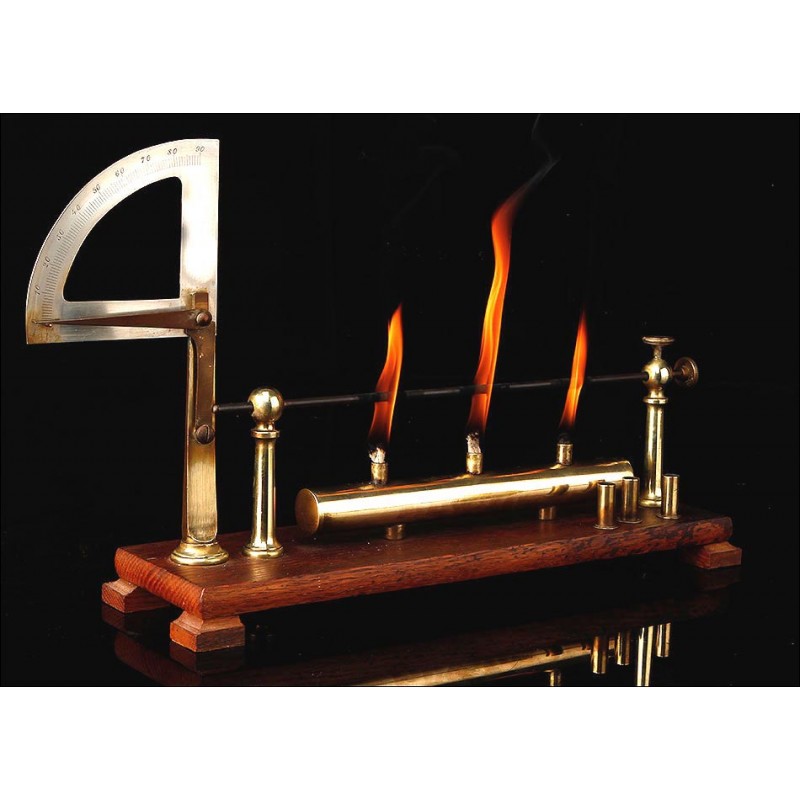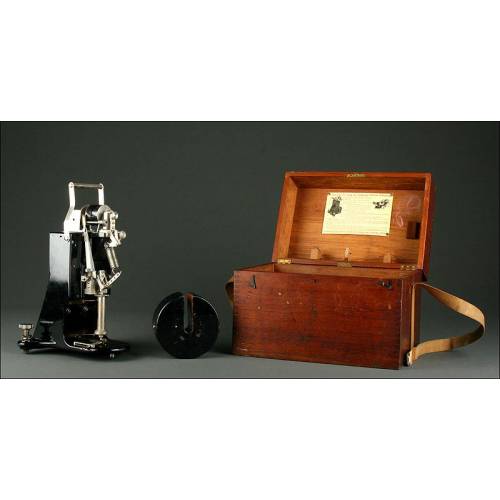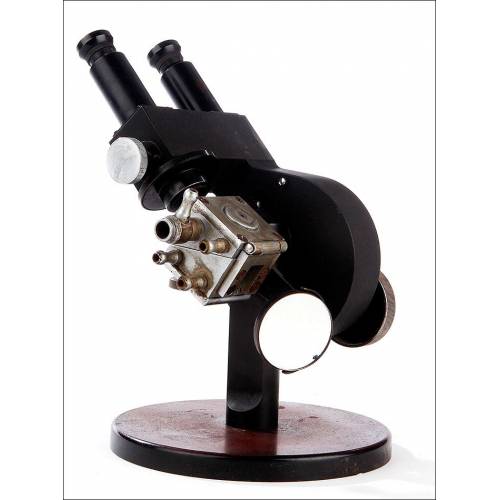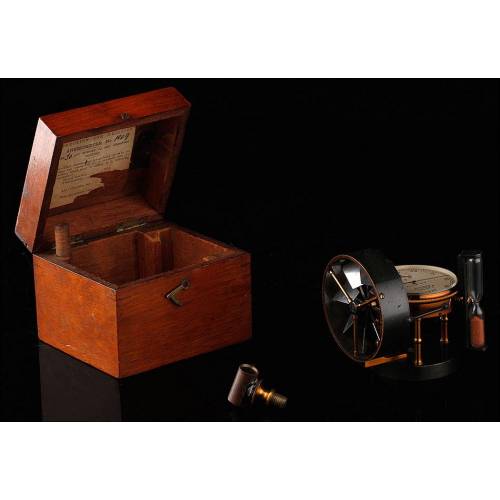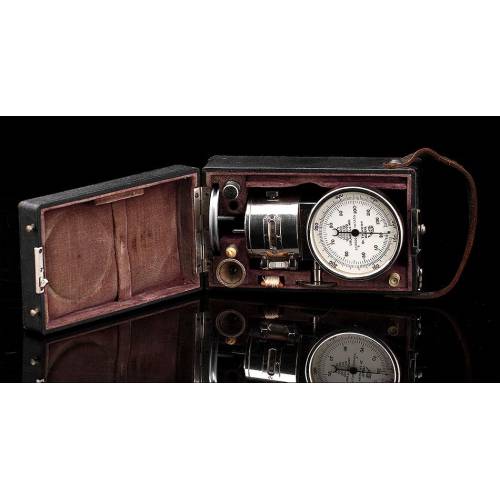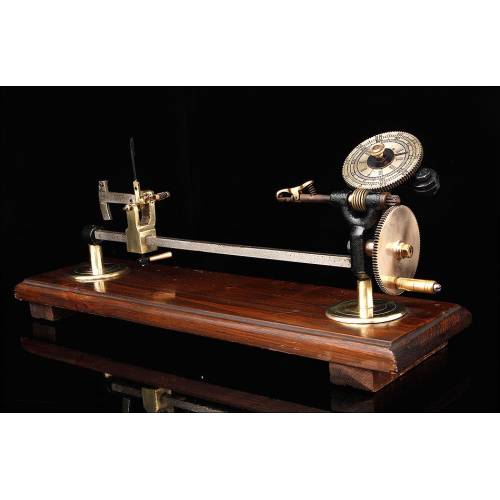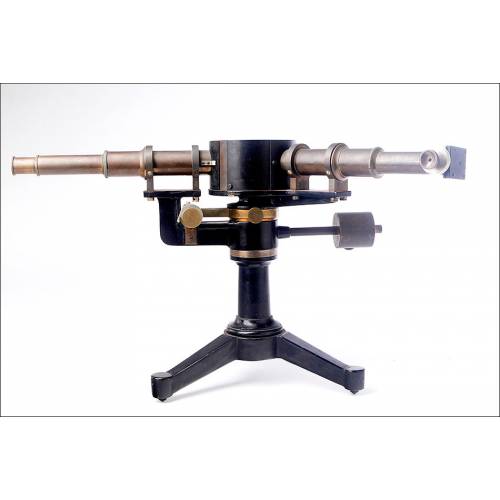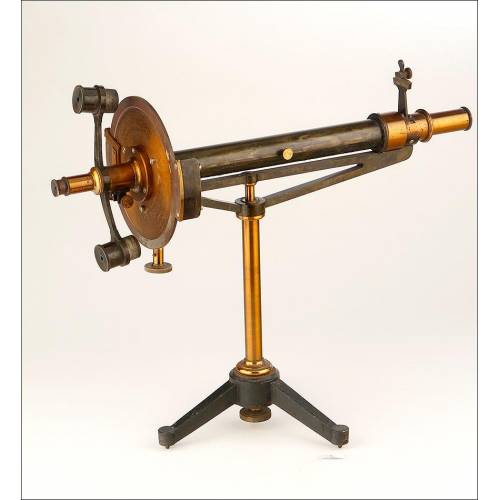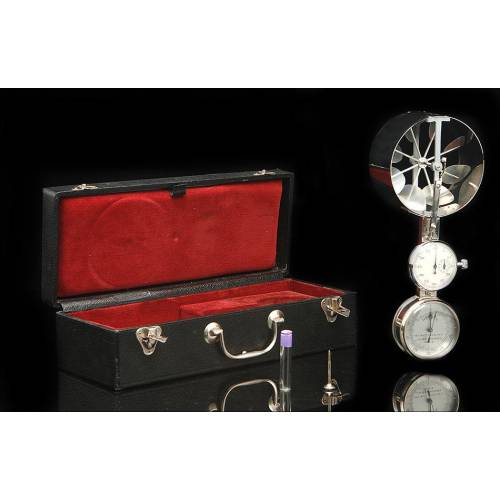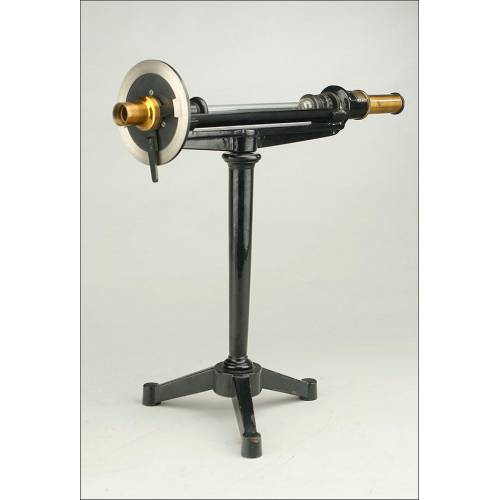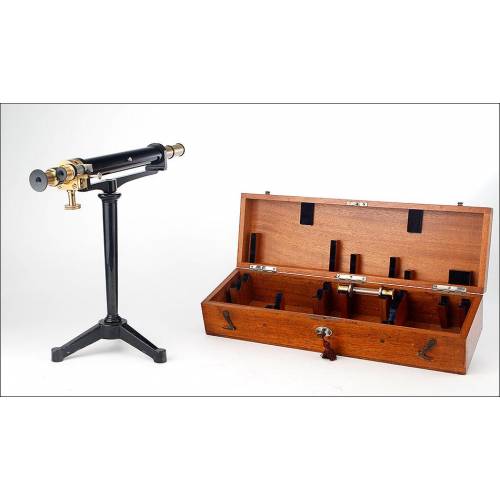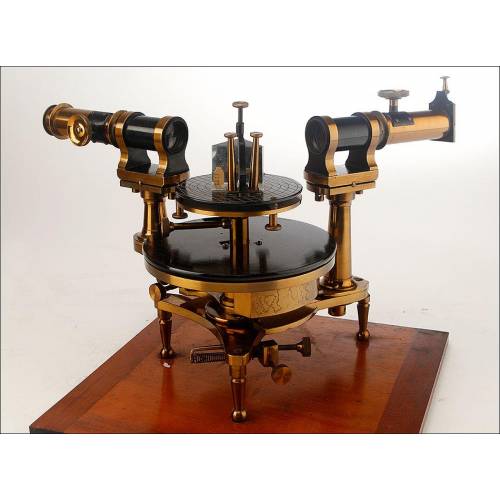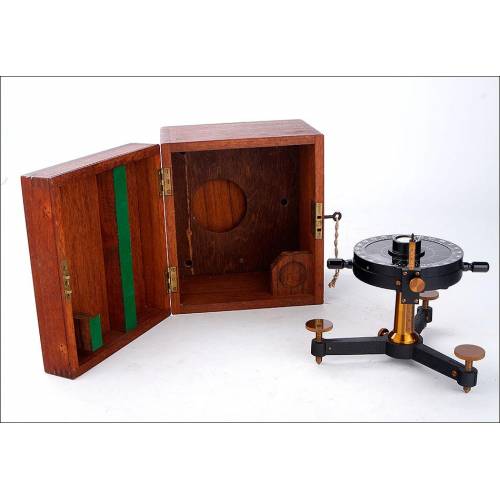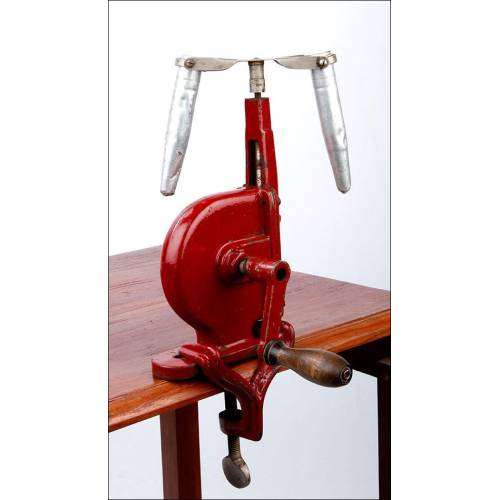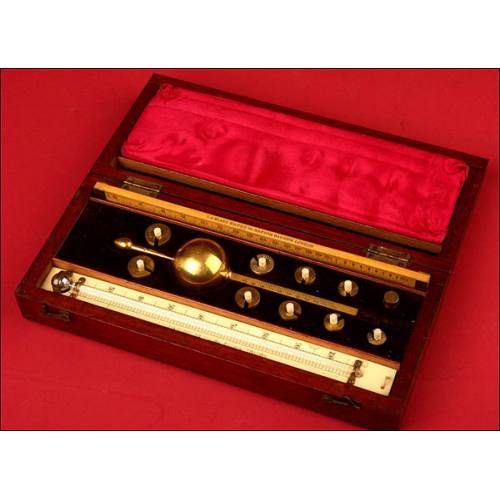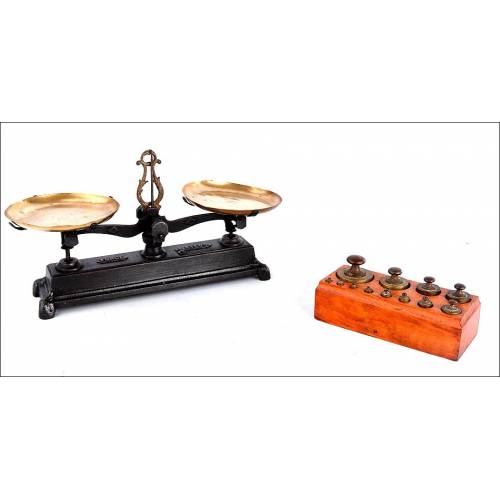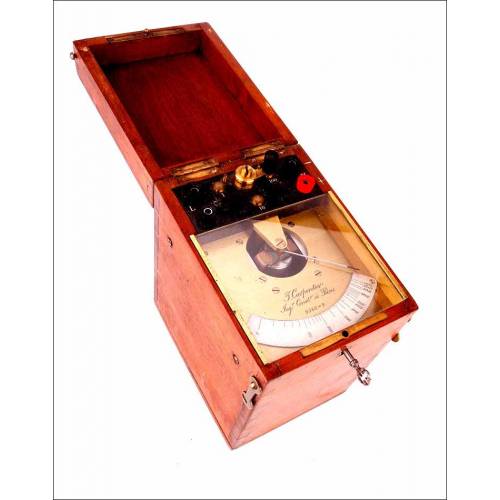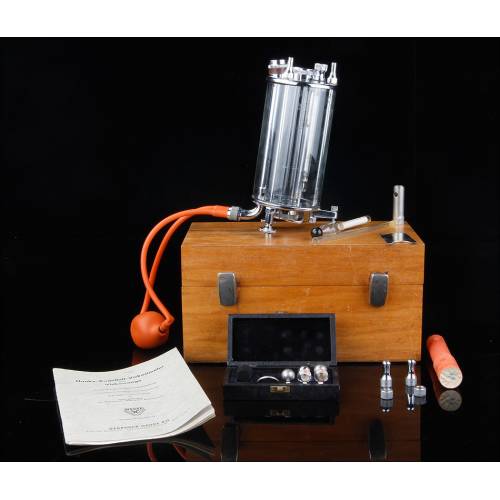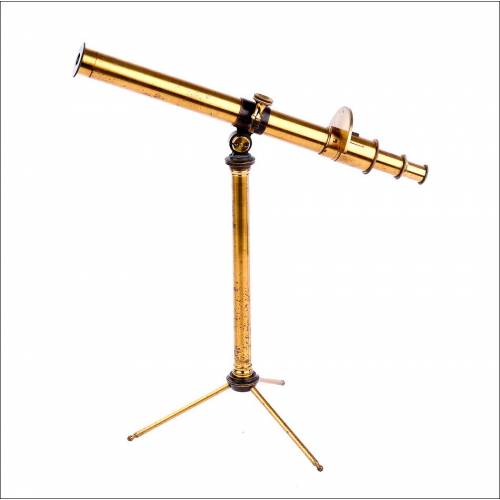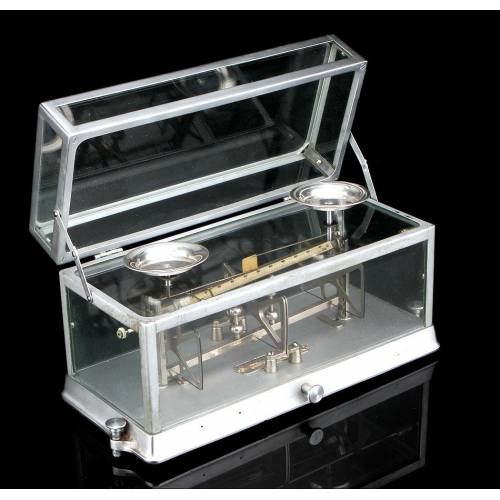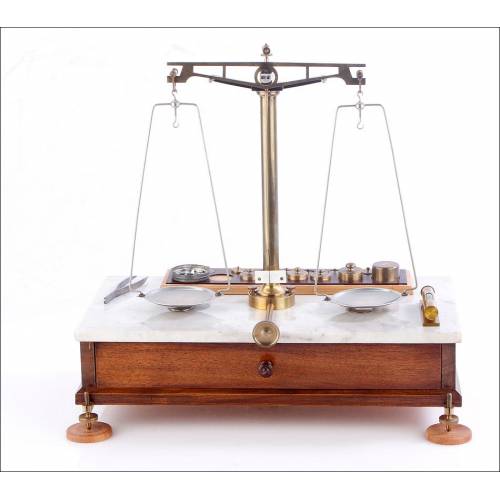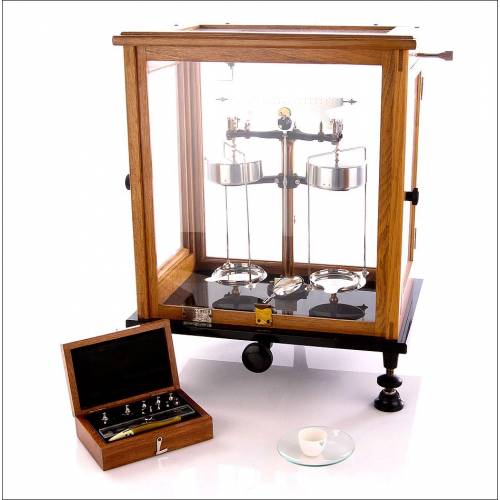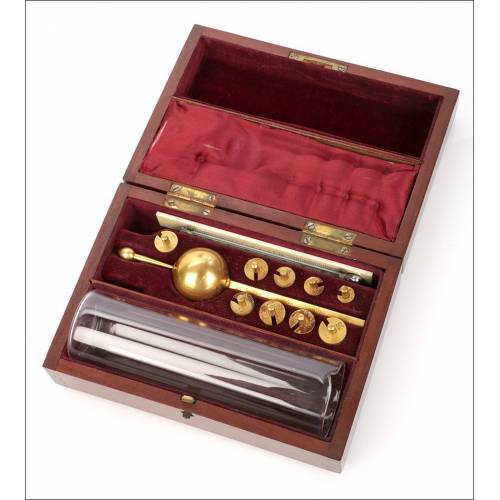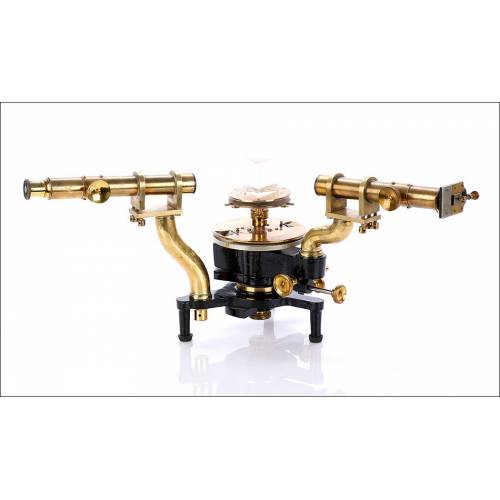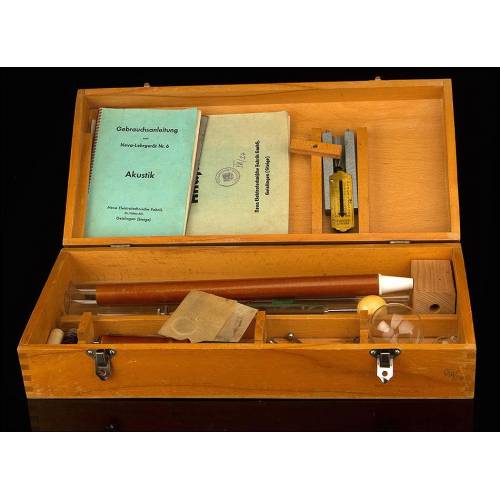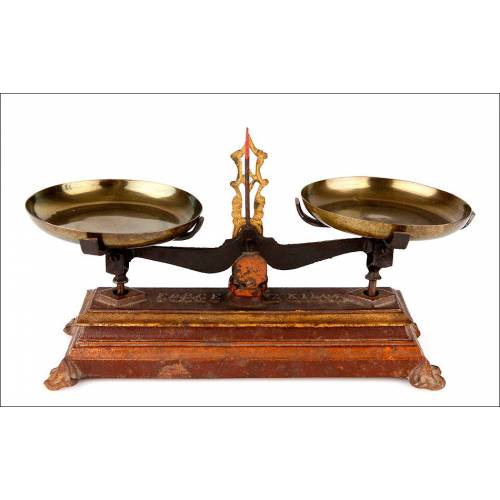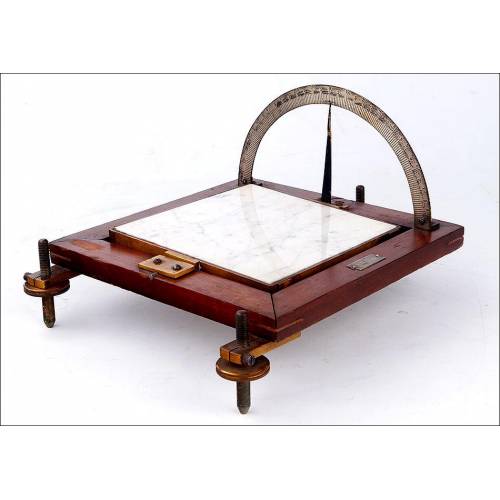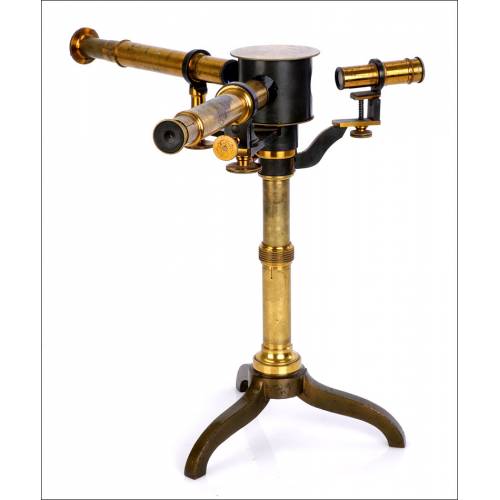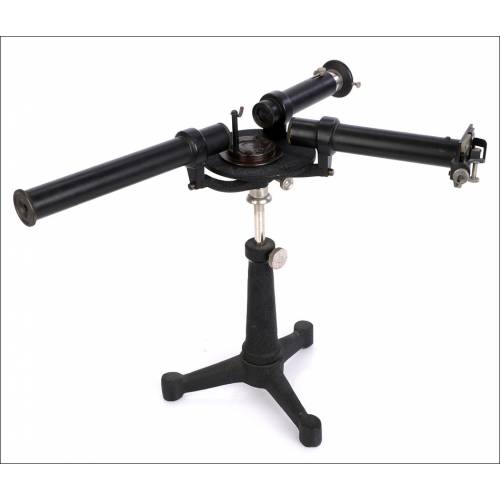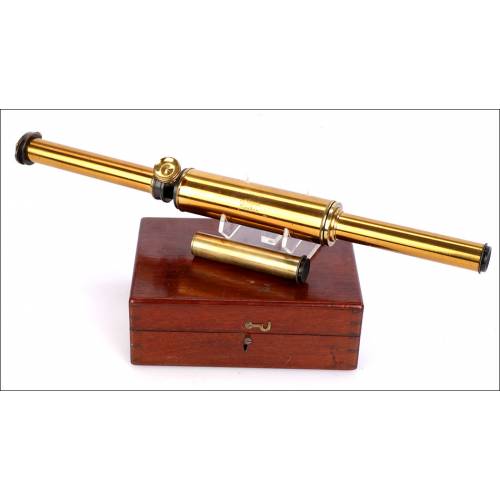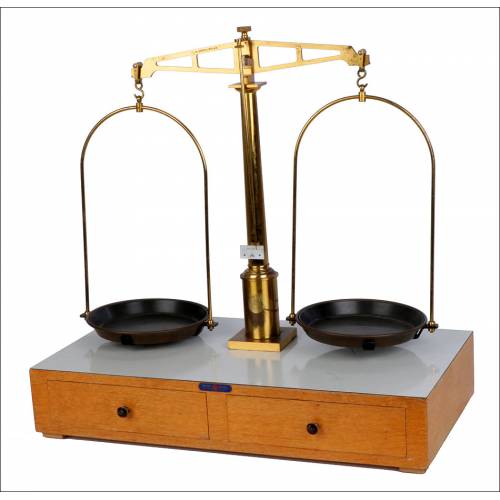A-944
Antique Dilatometer in Very Good Condition. Circa 1880
Curious antique dilatometer, very well preserved and still working. Made circa 1880.
Sold!
This curious item is a dilatometer: a device that calculates the change of volume of the different materials (metals in this case) when heated. It shows an extremely simple though ingenious configuration, being in magnificent condition too. The instrument works fine and is quite attractive; it is made of polished brass, stands on a solid wooden base and mounts a silvery metal scaled arch. It is probably a teaching instrument, though these devices were also used by the factories to calculate the capacity for extension of the different materials.The article we are talking about has a solid mahogany base in good condition, rectangular in shape and with four small square legs that provide it with height and stability. The brass components of the device are attached to the base. We can see two vertical stands, one at each end, that support the metal rods to be tested. The right stand has a screw to immobilize the rods. Between both stands there is a horizontal hollow cylinder with three chimneys designed contain wicks; these wicks must be lighted to heat the rod. When the user puts the rod over the three fires, the metal expands and the left end of the rod pushes a metal plate connected to a brass vertical stand. The plate is attached to a metal pointer; the two pieces make up an element that oscillates on a screw. The screw is connected to a 90-degree scaled angle. When the metal rod expands the pointer moves upwards and indicates the degrees corresponding to the maximum change of volume. This is quite a reliable system that, in spite of the trace of time, still works perfectly and preserves all its charm. Quite ingenious and full of character, this fantastic dilatometer is bound to become part of an attractive collection of scientific antiques. Measurements: Width: 16.5 in /42 cm. Height: 9.8 in/25 cm.

